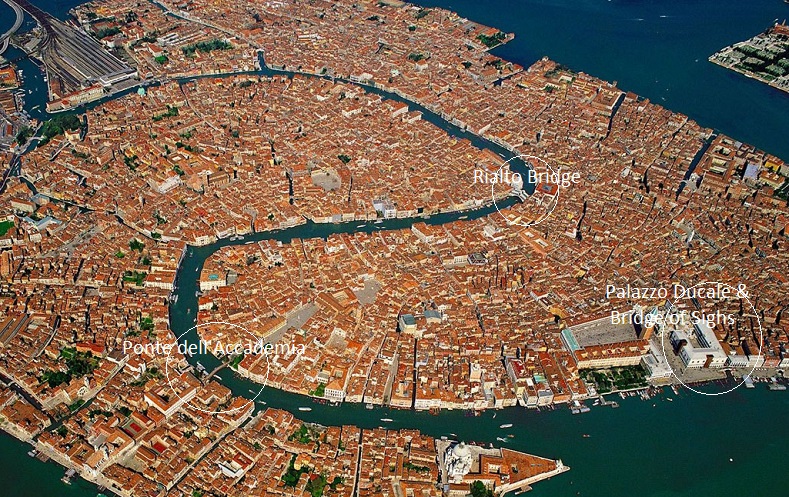
|
|||||||||||
From Rialto to the Bridge of Sighs
Welcome to Venezia ...second leg of the tour :-)...
The Vaporetto canal tour (Ferry tour number one route), will allow you to admire an array of approximately 50 palaces, 6 churches and countless backdrops. This 'tour' starts at the Rialto Bridge and ends at 'il Ponte dei Sospiri (Bridge of Sighs). Following the long stretch past the Rialto Bridge, the canal makes a wide turn, known as the 'Volta', where the view becomes gradually wider approaching the Piazza San Marco.
The Rialto Bridge . The Rialto Bridge located almost in the middle of the Canal is the oldest bridge and was the dividing line for the districts of San Marco and San Polo. The first dry crossing of the Grand Canal was a pontoon bridge built in 1181, replaced in 1255 by a wooden bridge. The present stone bridge, a single span, was completed in 1591.
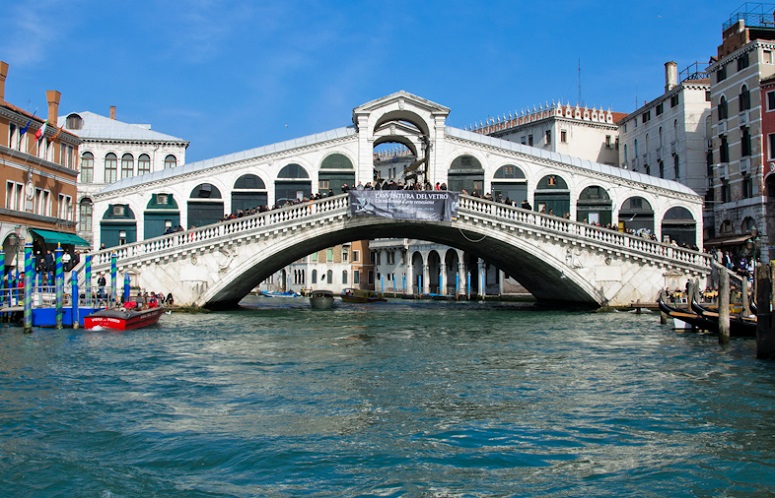 Riva del Vin. Overlooking the Gran Canal , near the the Rialto Bridge, and the Fish Market , is the 'Riva del Vin" (Wine Waterfront), on the San Paolo side, one of few areas along the canal with pedestrian walkways. The name comes from the fact that in the past this stretch of the canal was used for the wine trade. It is lined with restaurants where you can still taste some of the best Italian wine...the price also covers the enjoyment of the water...
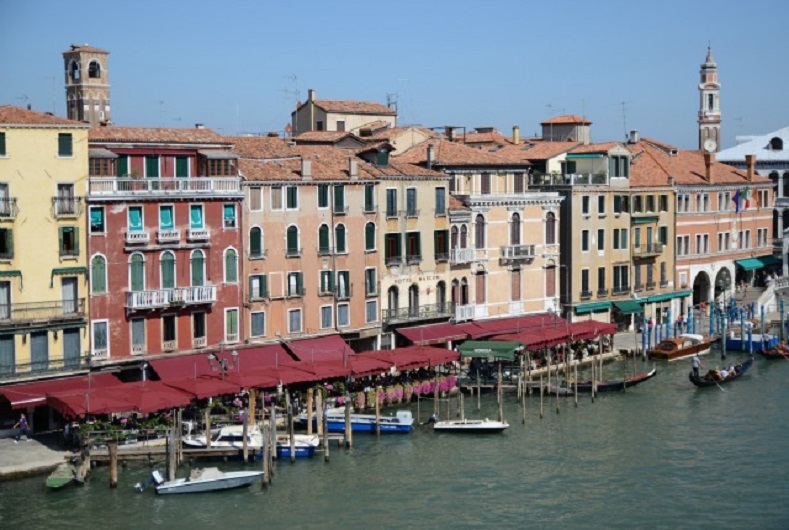 Palazzo Mocenigo. Several palazzi are named after the Mocenigo family, seven of whom were Doges of Venice. Other palaces are the Palazzo Mocenigo Casa Vecchia and Palazzo Mocenigo Casa Nuova.
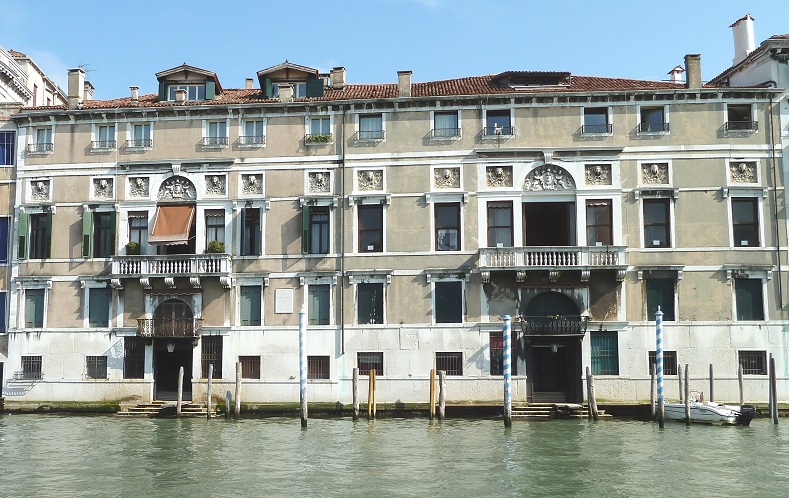 Palazzo Garzoni. The Palazzo Garzoni is Gothic-style palace located on the Grand Canal, in the Sestieri of San Marco, adjacent to the Fondaco Marcello, in Venice, Italy. Originally built for a wealthy family of merchants, it later became home to the illustrious Garzoni family. The building has been converted to luxury apartments, retaining its original features such as the courtyard.
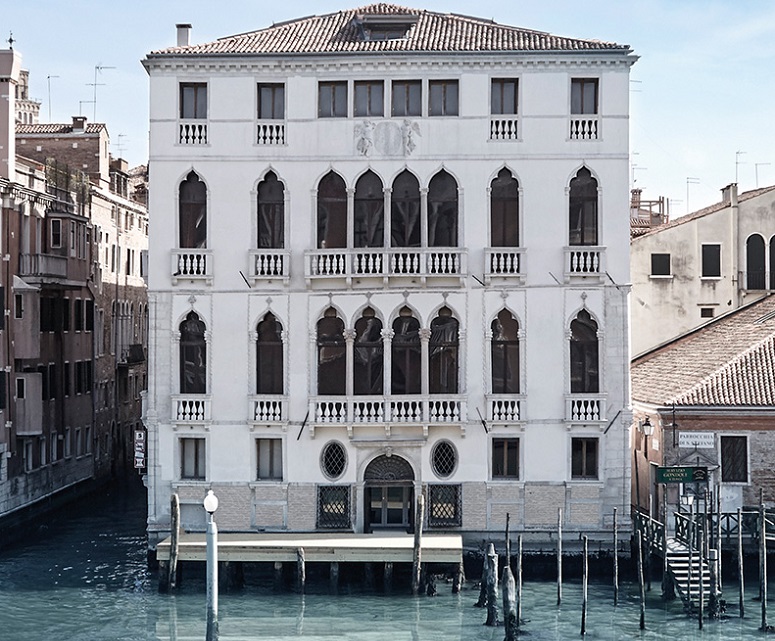 Palazzo Barzizza. Palazzo Barzizza is a restructured formerly Gothic-style palace in the district of San Polo. The palace was erected in typical fondaco style, with warehouses in the base and residence atop, by the Contarini family in the 13th-century. It has undergone a number of refurbishments over the centuries. The Barzizza acquired the palace in the 18th-century.
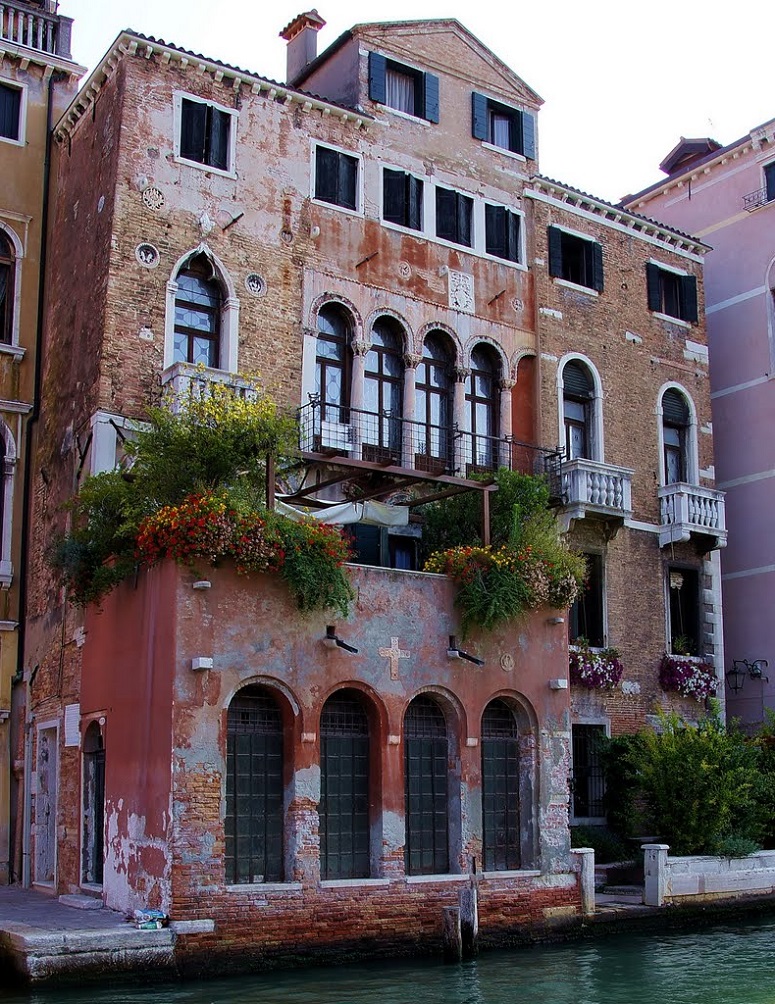 The Palazzo Grimani di Santa Maria Formosa, rebuilt in 1532-1569, was originally the residence of the Venetian doge Antonio Grimani. In the 80's was donated to the State and by 2015 was officially converted to a museum. The palace has a three parts composition with a small backyard. The façade, sporting characteristical massive windows arches, is decorated with polychrome marble. The most striking feature of the interior is the Sala di Psiche featuring frescoes from famous Italian artists.
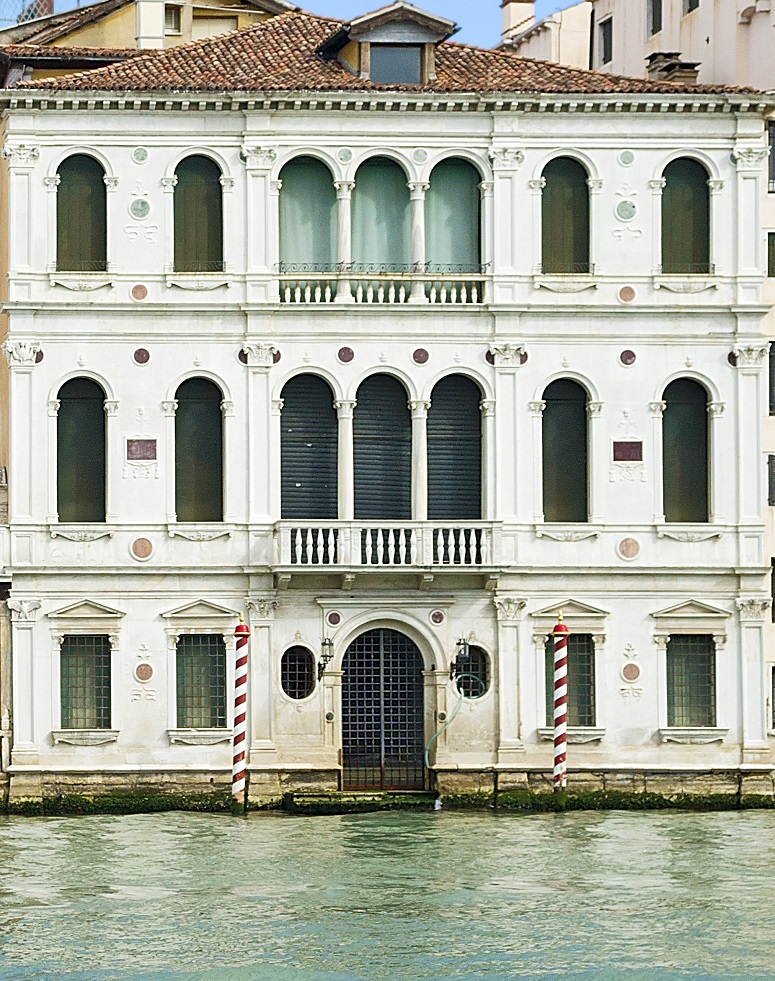 Palazzo Corner Spinelli. The Palazzo Corner Spinelli , in the sestiere (district) of San Marco was commissioned in the late 15th century by the aristocratic Lando Family, and built on designs by Mauro Codussi. The present facade was designed between 1497 and 1500. Currently the building houses the headquarters of the famous firm Rubelli S.p.A. dealing with the manufacture and trade of prestigious silk furnishing fabrics. 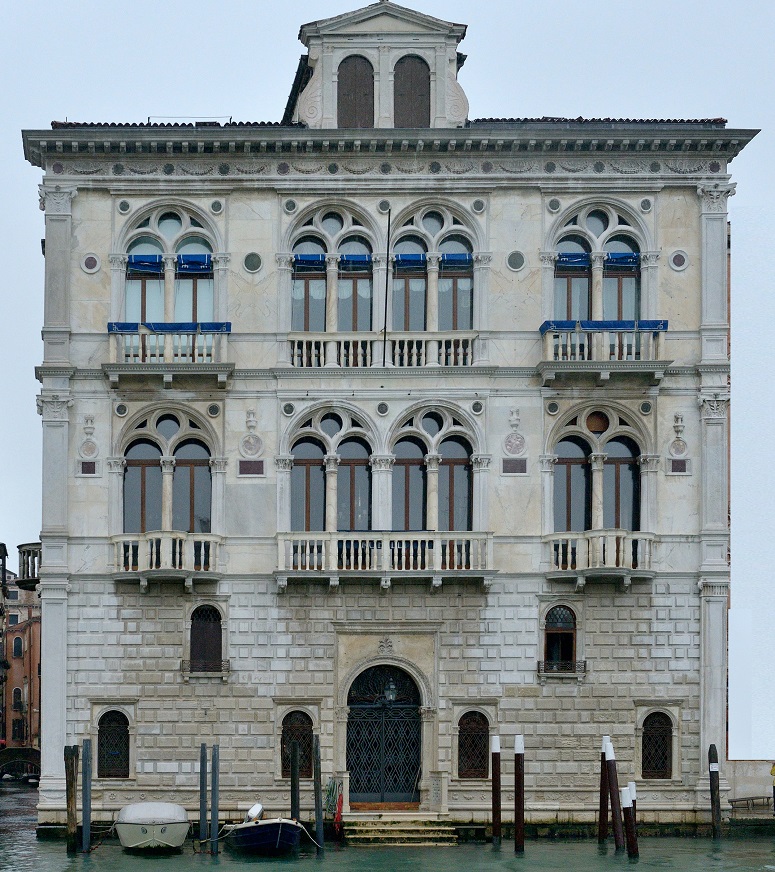 Palazzo Grassi. Palazzo Grassi was designed by Giorgio Massari, and the building was completed between 1748 and 1772. It features an academic classical style that is in contrast to the surrounding Byzantine Romanesque and Baroque Venetian palazzi. The façade is constructed in white marble, and lacking the lower mercantile openings typical of many Venetian patrician palaces.
The Palazzo was purchased by the Fiat Group in 1983, under the late chairman Gianni Agnelli, and it underwent a complete restoration. The group's aim was to transform Palazzo Grassi into an exhibition hall for the visual arts. It continues to be used as an art gallery today. 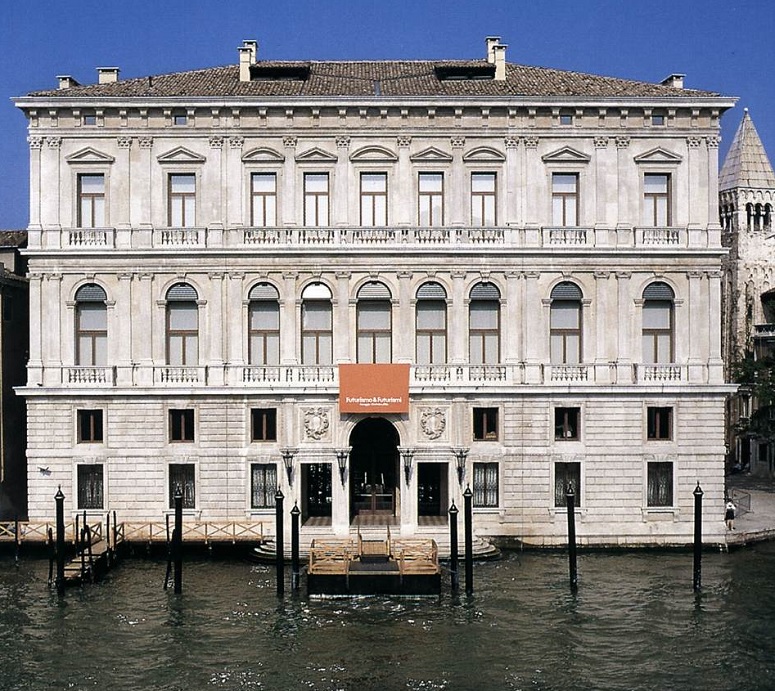 Ca' Rezzonico. The Ca’Rezzonico is perhaps one of the city's most important and intriguing museum, and the lesser known. Its own history is a micro history of Venice itself, passing from families to families as they grew rich and wealthy. Since 1935, the Ca’Rezzonico has been owned by the City Council of Venice, which uses it to display part of its vast collection of 18th century art, much of it overspill from the Museo Correr. The Ca’Rezzonico has become home to pieces (often entire rooms) salvaged from other distressed 18th century Venetian palazzos.
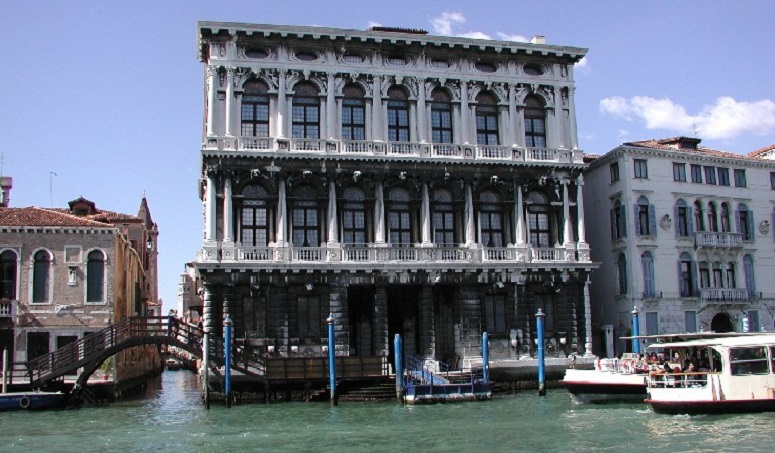 Accademia. The Accademia was founded on 24 September 1750 and at the time, it was one of the first first institutions to study art restoration. In 1807 the academy was re-founded by Napoleonic decree. The name was changed from Veneta Academia di Pittura, Scultura e Architettura to Accademia Reale di Belle Arti, "royal academy of fine arts", and the academy was moved to the Palladian complex of the Scuola della Carità, where the Gallerie dell'Accademia are still housed. The collections of the Accademia were first opened to the public on 10 August 1817. The Gallerie contains masterpieces of Venetian painting up to the 18th century, generally arranged chronologically though some thematic displays are evident.
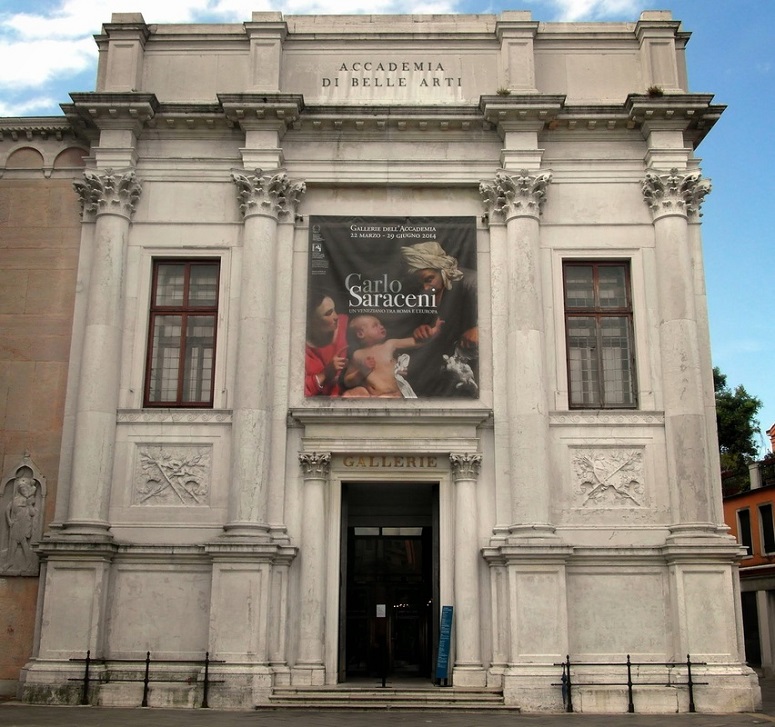 Ponte dell'Accademia. The Ponte dell'Accademia is one of only four bridges to span the Grand Canal in Venice, Italy. It crosses near the southern end of the canal, and is named for the Accademia di Belle Arti The bridge links the sestieri of Dorsoduro and San Marco.
The original steel structure, designed by Alfred Neville, opened on 20th November, 1854,[2] but was demolished and replaced by a wooden bridge . The second bridge was consequently replaced by the present bridge, of identical construction, in 1985. As of 2011, a replacement bridge is under discussion. Lovers attach padlocks ("love locks") to the metal hand rails of the bridge, but the Venice authorities have attempted to crack down on this. 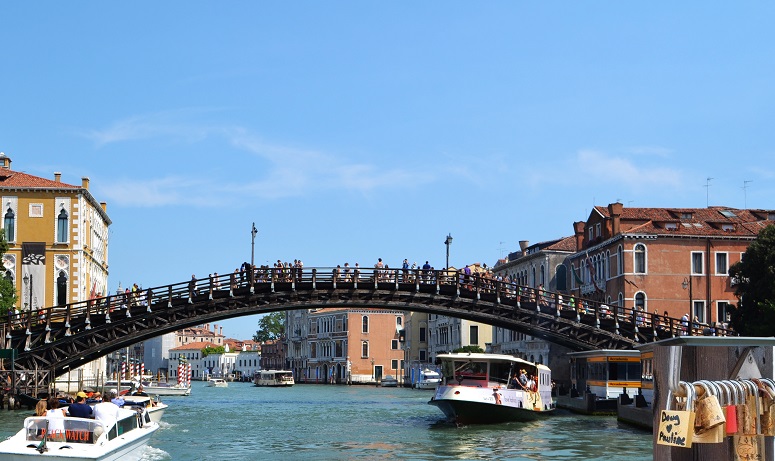 Peggy Guggenheim Collection .
The building is located between Santa Maria della Salute and the Gallerie dell Accademia. It is considered to be one of Europe's premier museums devoted to modern art, including masterpieces ranging in style from Cubism and Surrealism to Abstract Expressionism. The structure was intended as a four storey palace, in fact it never rose beyond the ground floor. In 1949 it was bought by the American heiress Peggy Guggenheim, here she collected art...ideas and..lovers.
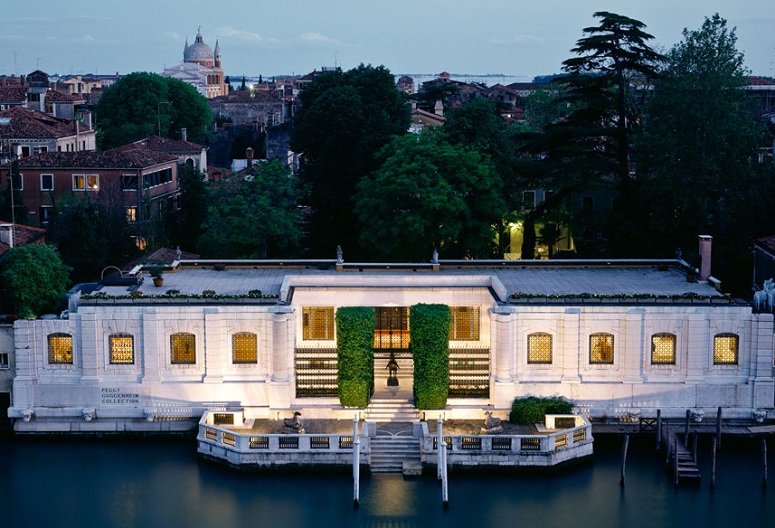 Santa Maria del Giglio. The church, whose name translates into St. Mary of the Lily referring to the flower classically depicted as being presented by the Angel Gabriel during the Annunciation, is more commonly known as Santa Maria Zobenigo . The edifice is situated on the Campo Santa Maria Zobenigo, west of the Piazza San Marco. It was rebuilt by Giuseppe Sardi for Admiral Antonio Barbaro between 1678 and 1681 and has one of the finest Venetian Baroque facades in all of Venice. The church is now part of the parish of San Moisè. It lacks any Christian image statues and shows the marble relief maps of various places in which Antonio Barbaro served, including Candia, Zadar, Padua, Rome, Corfu and Split. His own statue, as the chief benefactor, in the center, sculpted by Josse de Corte, is flanked by representations of Honour, Virtue, Fame and Wisdom. The other statues are his brothers. At the top of the facade is the Barbaro family arms carved in relief.
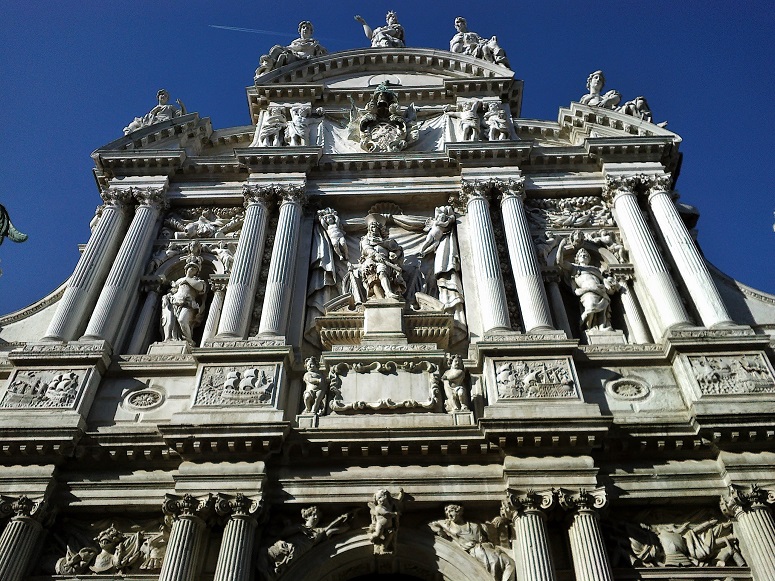 Santa Maria della Salute. The Roman Catholic Church of Santa Maria della Salute, is located at Punta della Dogana in the Dorsoduro district. The church is part of the parish of the Gesuati and is the most recent of the so-called plague-churches. As a votive offering for the city's deliverance from the pestilence, the Republic of Venice vowed to build and dedicate a church to Our Lady of Health. The church was designed in the then fashionable baroque style. Construction began in 1631. Most of the objects of art housed in the church bear references to the Black Death.
The dome of the Salute was an important addition to the Venice skyline and soon became emblematic of the city. 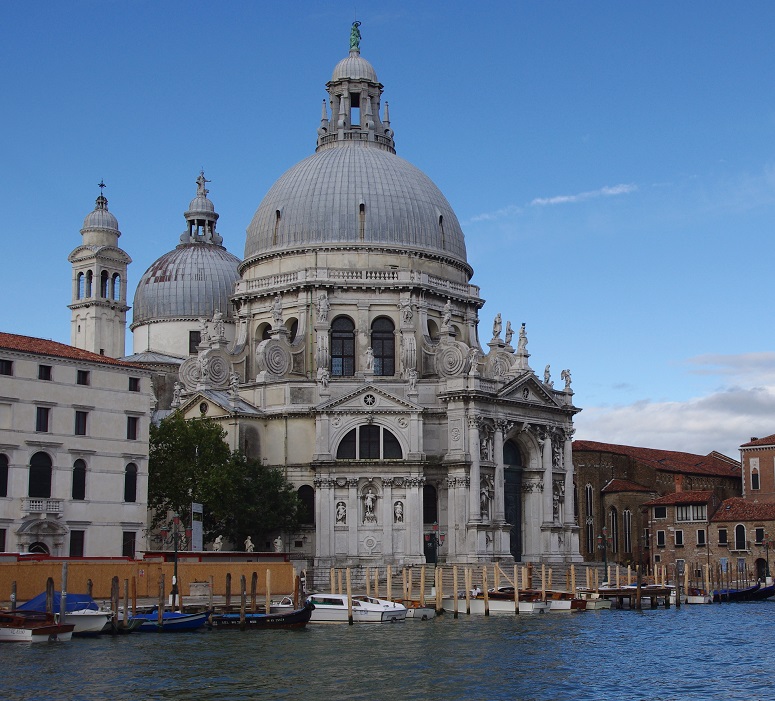 Punta della Dogana Punta della Dogana is an art museum in Venice's old customs building, the Dogana da Mar. It also refers to the triangular area of Venice where the Grand Canal meets the Giudecca Canal, and its collection of buildings: Santa Maria della Salute, Patriarchal Seminary of Venice, and Dogana da Mar at the triangle's tip. The point was used for docking and customs as early as the beginning of the 15th century. The museum's art is housed in and around the Dogana da Mar building.
Atop the building are statues of Atlas, built to represent the supremacy of the Republic of Venice. The two slaves hold a golden ball upon which Giuseppe Benoni's Fortune stands.  Harry Bar . Harry's Bar is a bar and restaurant located at Calle Vallaresso. It was opened in 1931 by bartender Giuseppe Cipriani. The Bar has long been frequented by famous people, and it was a favourite of Ernest Hemingway. Other notable customers have included Italian conductor Arturo Toscanini, inventor Guglielmo Marconi, Charlie Chaplin, Alfred Hitchcock, Richard Halliburton, Truman Capote, Orson Welles, Baron Philippe de Rothschild, Princess Aspasia of Greece, Aristotle Onassis, Barbara Hutton, Peggy Guggenheim, and Woody Allen. It was declared it a national landmark in 2001.
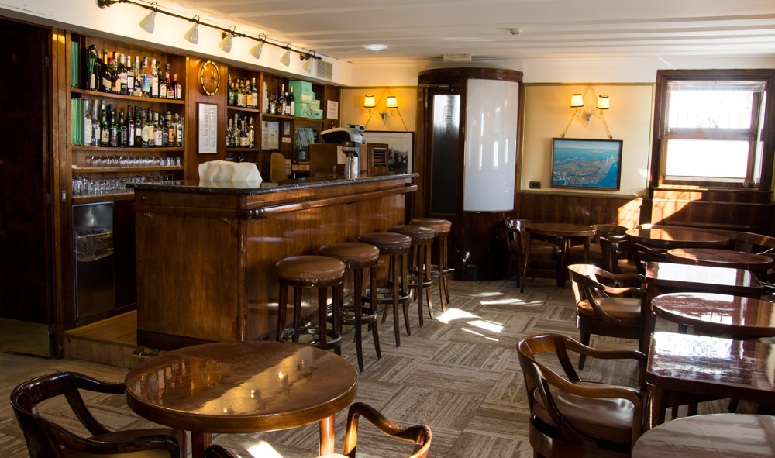 San Marco Square. 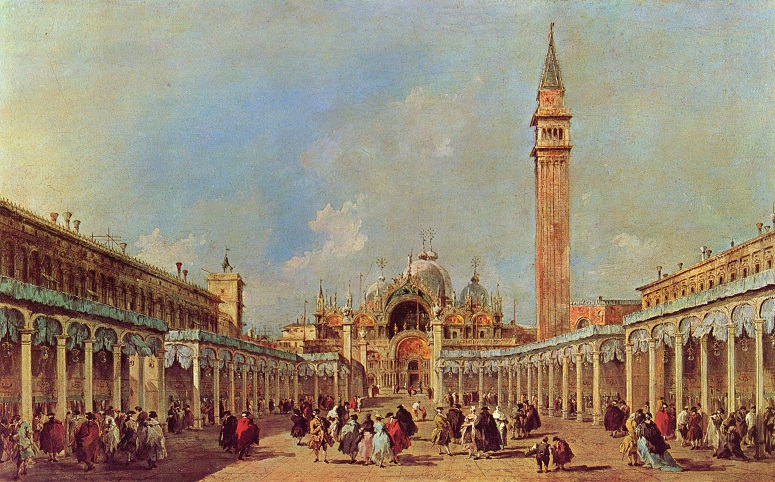 San Marco is one of the six sestieri (districts) of Venice, lying in the heart of the city as the main place of Venice. It also includes the island of San Giorgio Maggiore. Although the district includes Saint Mark's Square, that was never administered as part of the sestiere. The small district includes many of Venice's most famous sights, including St Mark's Square, Saint Mark's Basilica, the Doge's Palace, Harry's Bar, the Palazzo Dandolo, San Moisè, the La Fenice theatre, the Palazzo Grassi and the churches of San Beneto, San Fantin, Santa Maria del Giglio, San Maurizio, San Moisè, Santo Stefano, San Salvador, San Zulian and San Samuele.
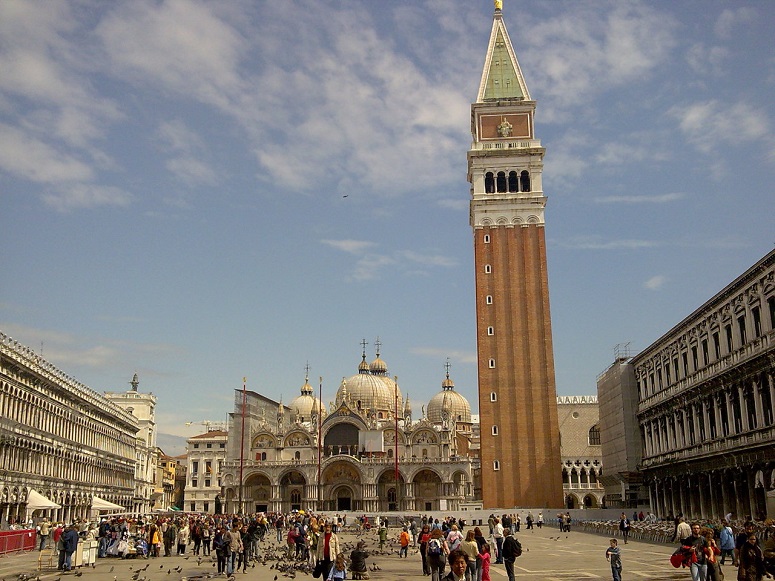 La vetrina ideale per promuovere i vostri prodotti e servizi sul mercato Nord Americano ma che potrebbe essere un punto di visibilità anche nei vari mercati internazionali.  Paesi di provenienza dei visitatori in ordine numerico Stati Uniti - Canada - Italia - Gran Bretagna - Australia - China - Germania - Francia - Nuova Zelanda - Olanda Coloro interessati ad inserire la loro attivita'/azienda/ nel sito
|

|
||||||||||
